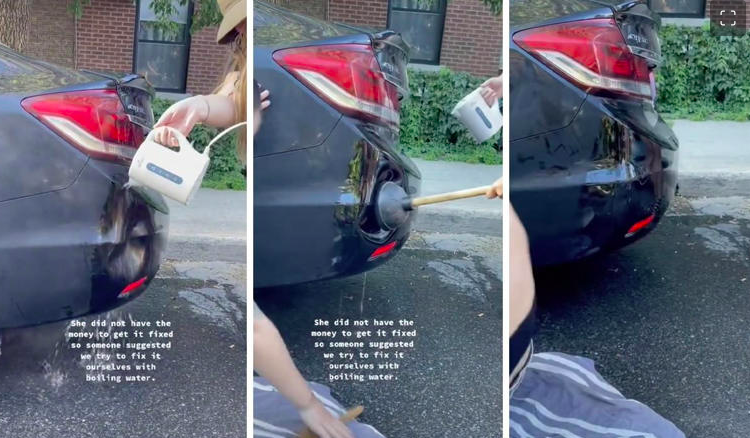Most modern automobiles are designed to crumple on contact in order to absorb as much of the impact force as possible in the event of an accident. This design trend began in the 1970s. For obvious reasons of security. The higher the amount of force absorbed, the less likely it is that any of the passengers would be hurt, and vice versa.
Unfortunately, this mentality has made many components of current automobiles far more brittle than they were in the past. The bumpers at both the front and the back are very important. Bumpers are infamous for dents after even the slightest collisions due to their thin molded plastic construction and color matching with the surrounding steel body panels.

How It Operates
Anybody who’s ever dealt with a badly damaged bumper knows how much it is to have a professional fix it. Repairing even plastic bumpers may be expensive. The answer is rooted in the general tenets of how auto body businesses operate.
My own observation is that if the bumper is substantially damaged, they usually won’t even try to fix it. They’ll have to pay a lot more for a replacement of similar quality, though, as that’s what the manufacturer recommends. When you include in the time and money needed to repair or replace the bumper’s interior components due to damage sustained in an accident, the total may soon become prohibitive.
Using just a tea kettle, some boiling water, and a plunger, this technique is an attempt to save such hassle and money. The procedure includes the following steps:
To start, fill a kettle with water and carry it out to the car when it has boiled. Park the car someplace that doesn’t have a lot of hot water on the ground.
After waiting for the water to boil, slowly pour it over the ding. If it doesn’t work, try pressing a toilet plunger into the dent and pressing it firmly on the plastic until a seal is formed.
Step 3: Pull carefully with the plunger while reaching beneath the car and pulling out the dent from the inside of the plastic. (An assistant makes this process far less tedious.) Be wary of the dripping water, since it might cause serious burns.
Results
Unfortunately, I was unable to make use of this exploit in any way, at least not using the technique shown in the video. Since the damage on my parents’ Toyota Sienna was about the same size, shape, and location as the one in the TikTok video, I decided to give it a try.
A pot of boiling water didn’t do the trick since it didn’t warm and soften the plastic bumper enough to be squeezed and lifted out of the dent. At first, I couldn’t get my palm far enough in behind the dent to press on it, but I managed. Immediately after applying the water, I pushed on it as hard as I could, but it was still unyielding. I tried everything, but I couldn’t move it.
What didn’t help was a second pot of boiling water. I attempted to use a toilet plunger to suction the dent out, but the plunger wouldn’t seal on the bumper’s uneven surface.
Based on my research, I have determined that it is unlikely to be successful for the vast majority of individuals. Lucky breaks helped the people in the video succeed:
The plastic bumpers were thin enough that they might be easily pliable in hot water.
Because to the damage’s placement and the design of the car, they were able to reach inside and press on the dent from the inside, which greatly increased their chances of success.
The depression in the video was the perfect size and form for the toilet plunger to create a tight seal with the plastic. That helped draw the dent back into shape.
For most damaged bumpers, these three circumstances are very improbable and prevent this hack from being successful.
There Are Other Ways To Solve This
Following that failure, I attempted a different strategy.
For approximately five minutes, I carefully waved a heat gun set to its maximum heating setting over the damaged plastic, keeping the instrument about eight inches from the vehicle the whole time. This loosened up the bumper’s plastic enough that I could reach behind it and pop the ding out.
This method is worth a go if you have access to a heat gun and a car with a damaged bumper. Holding the heat gun too near may cause the paint on the bumper to peel off.
Take note that my parent’s bumper wasn’t back to normal, despite my best efforts to remove the damage. It was lacking some paint and there were still wrinkles where the damage had occurred. This method is worth a go if you don’t mind the end outcome being this way. If the bumper is damaged, it has to be fixed.
And after getting that damaged bumper fixed or replaced, you may want to invest in a bumper guard.
Read Next- For the first time in four decades, the United States Army released a completely new vehicle.




